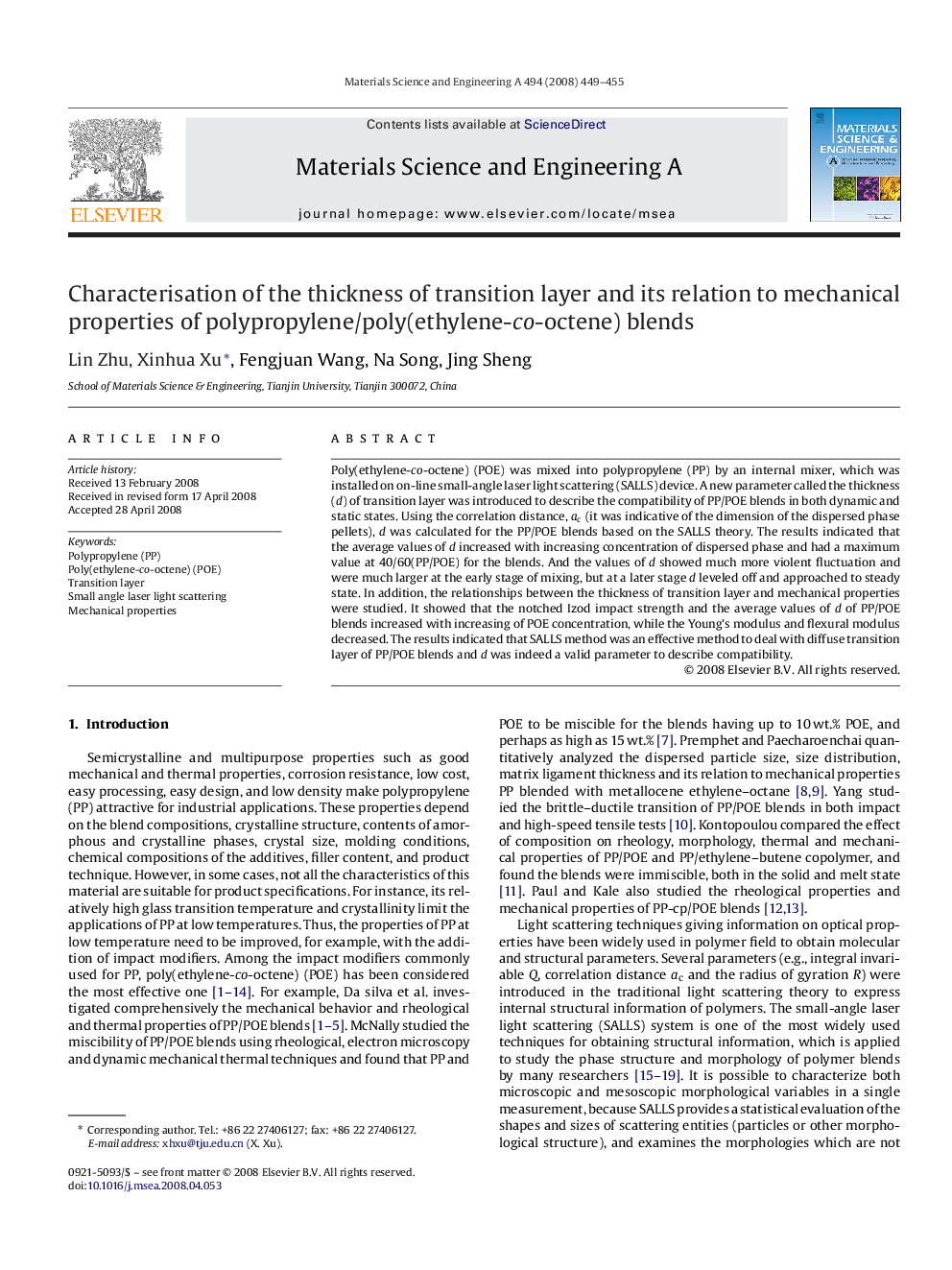| Article ID | Journal | Published Year | Pages | File Type |
|---|---|---|---|---|
| 1582004 | Materials Science and Engineering: A | 2008 | 7 Pages |
Poly(ethylene-co-octene) (POE) was mixed into polypropylene (PP) by an internal mixer, which was installed on on-line small-angle laser light scattering (SALLS) device. A new parameter called the thickness (d) of transition layer was introduced to describe the compatibility of PP/POE blends in both dynamic and static states. Using the correlation distance, ac (it was indicative of the dimension of the dispersed phase pellets), d was calculated for the PP/POE blends based on the SALLS theory. The results indicated that the average values of d increased with increasing concentration of dispersed phase and had a maximum value at 40/60(PP/POE) for the blends. And the values of d showed much more violent fluctuation and were much larger at the early stage of mixing, but at a later stage d leveled off and approached to steady state. In addition, the relationships between the thickness of transition layer and mechanical properties were studied. It showed that the notched Izod impact strength and the average values of d of PP/POE blends increased with increasing of POE concentration, while the Young's modulus and flexural modulus decreased. The results indicated that SALLS method was an effective method to deal with diffuse transition layer of PP/POE blends and d was indeed a valid parameter to describe compatibility.
